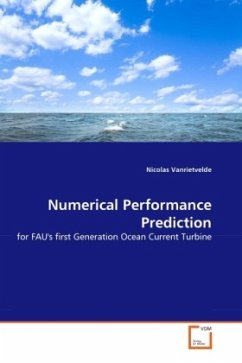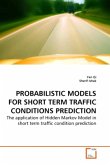This thesis presents the analytically predicted position, motion, attitude, power output and forces on Florida Atlantic University's (FAU) first generation ocean current turbine for a wide range of operating conditions. These values are calculated using a seven degrees of freedom dynamic simulation of the turbine and the cable that attaches it to the mooring system. The numerical simulation modifications and upgrades completed in this thesis include developing a wave model including the effects of waves into the simulation, upgrading the rotor model to specify the number of blades and upgrading the cable model to specify the number of cable elements. This enhanced simulation is used to quantify the turbine's performance in a wide range of currents, wave fields and when stopping and starting the rotor. Subsequently, a sensitivity analysis is done to evaluate changes in turbine performance caused by changes in turbine design and operation.
Bitte wählen Sie Ihr Anliegen aus.
Rechnungen
Retourenschein anfordern
Bestellstatus
Storno








